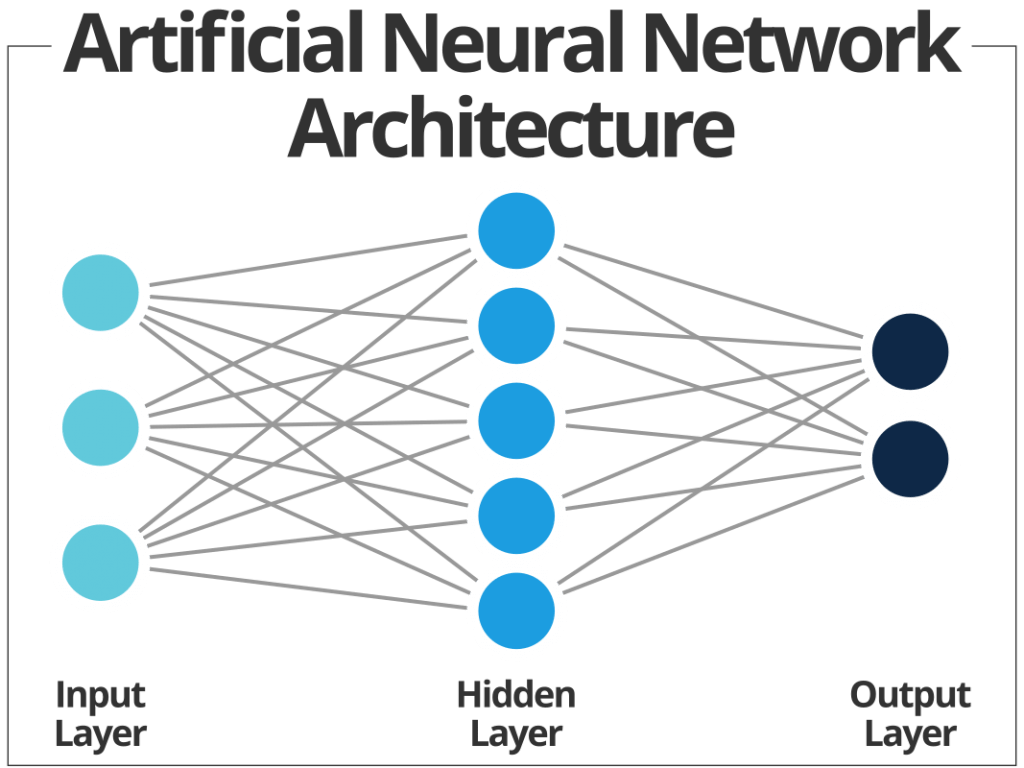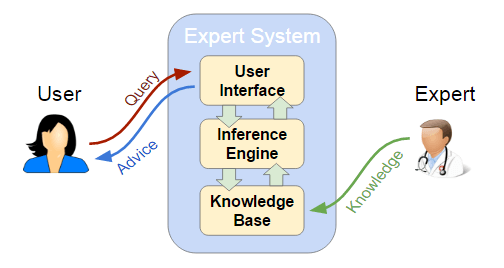Artificial Intelligence or AI is a popular and one of the most searched terms worldwide. The adoption of AI has increased in various sectors like healthcare, finance, and banking for a decade.
But what is Artificial intelligence and how important is this thing?
In this article, we will get a closer look at Artificial intelligence, and its types. There are various career opportunities in this field which we will also discuss in this article.
What is Artificial Intelligence?
Artificial Intelligence or AI is the science of building machine intelligence that is capable of thinking like humans. It uses Algorithms and methods to build machines that can perform human-like tasks.
Who is the father of Artificial Intelligence?
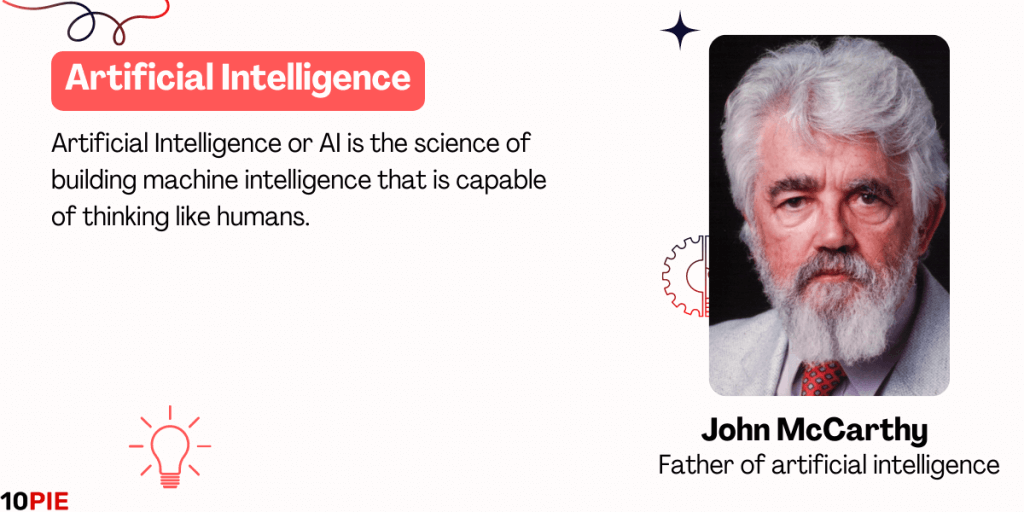
The father of artificial intelligence is John McCarthy, who organized the mythic Dartmouth conference In 1956, where he first used the term “artificial intelligence”, defined as the science and engineering of making intelligent machines.
Types of Artificial Intelligence
Artificial intelligence is majorly divided into two categories, which are based on capabilities and based on functionality.
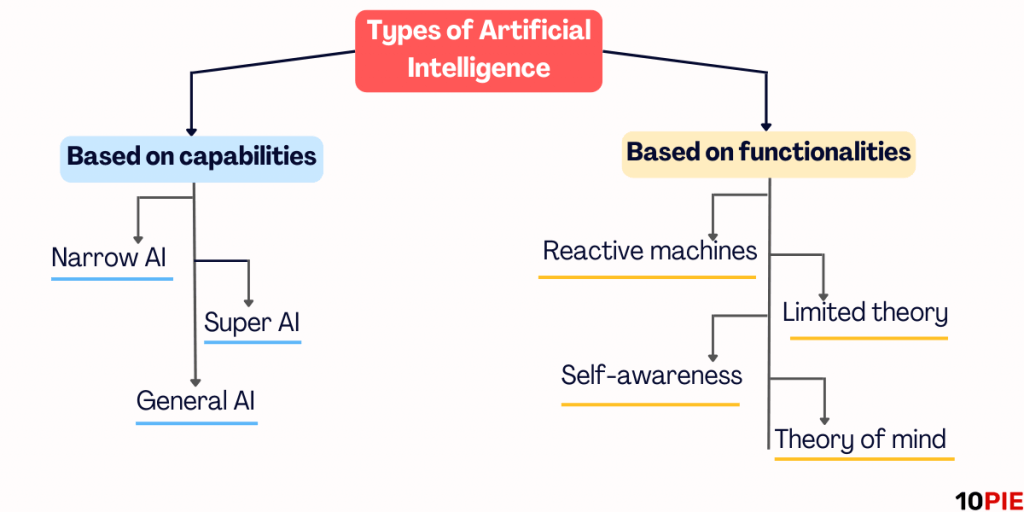
Artificial Intelligence based on capabilities:
- Weak AI or narrow AI
- General AI
- Super AI
Artificial intelligence based on functionality:
- Reactive machines
- limited theory
- Theory of mind
- Self-awareness
📌 Related article: Handpicked Artificial Intelligence seminar topics for your presentation
Branches of Artificial Intelligence
Artificial intelligence is an expanding field with many branches and sub-branches. Let’s take a deep dive into them.
1. Machine learning
Machine learning is a branch of artificial intelligence (AI) and Computer Science, which is defined as the ability of machines to learn automatically from data and algorithms, Improve their performance from past experiences and make decisions without being explicitly programmed.
The machine-learning process begins with a collection of historical data such as direct experience or instructions. With this data, it builds logical models for future inference. Whenever it receives new data It predicts the outcomes with the help of this model.
The accuracy of the output is based on the amount of data, as a large amount of data helps to build a better model which increases the accuracy of production.
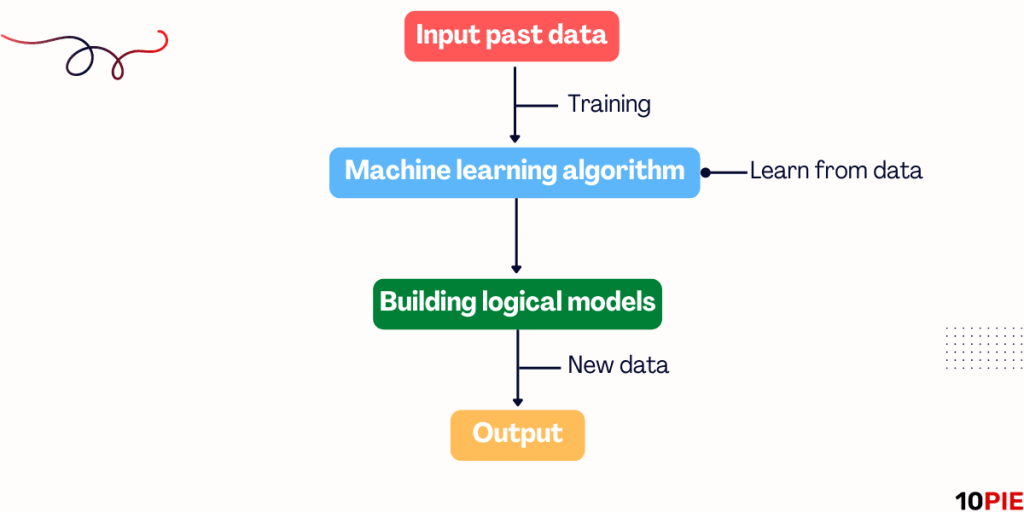
Machine Learning algorithms can be further classified into three types:-
- Supervised learning is a method in which we use Labelled data to train machines and on that basis, it predicts the output. Labeled data is the data where output is already known to you. The goal of this model is to map the input to the output. An example of Supervised learning is the algorithm used to train the machine that identifies images of animals.
- Unsupervised learning is a machine learning technique in which we use data that is not Labeled. Unlabelled data means there is no fixed output variable. The model extracts data from the input, identifies patterns and features, and then generates the output.
- Reinforcement learning is a technique that uses a model of agent and environment to produce actions and rewards. There is no predefined target variable in this learning model.
2. Neural network or deep learning
Artificial Neural network, also known as deep learning, is a branch of artificial intelligence (AI) and sub-branch of Machine learning (ML) that can be used to solve more advanced problems. The algorithms of Neural networks are inspired by the structure of the human brain.
This network works similarly to the human brain. The Neural networks take in data and train themselves to recognize patterns and then predict the output for a new set of similar data. These networks are trained to detect the patterns and predict the most accurate output.
An artificial Neural network is a complex, integrated system that can perform analytics much deeper and faster than human capability. There are different types of neural networks, often best suited to different purposes and target outputs.
Face verification and Recognition algorithm are one of the most common and well-known Examples of Artificial Neural network and deep learning which is commonly used in Meta, self-driving cars, and virtual assistants like Siri, Alexa, and so on.
3. Expert system
An expert system is a computer system that uses artificial intelligence (AI) to mimic the decision-making and behavior of a human or an organization who have knowledge and experience in a certain field. This system is not designed to replace human professionals instead, it is used to assist experts in making complex decisions.
Like a human expert, the system aids in decision-making for complex issues by using both facts and heuristics. It possesses in-depth knowledge of a certain field and is capable of resolving any challenging issue in that field. These systems are created for certain fields like science, medicine, etc.
The whole process of an expert system mainly revolves around three components: User Interface, Inference Engine, and Knowledge Base.
The user Interface (UI) takes a query from the User and passes it on to the Inference engine.
Inference engine work as the brain of the system. Which concludes or infers new information by using the inference rules to the knowledge base. It helps to determine an error-free solution to user requests.
The knowledge base is similar to a database that holds data and instructions for a specific field or subject. The Expert System will be more accurate if the knowledge base is more extensive.
4. Robotics
Robotics is the branch of artificial intelligence and engineering. The main aim of robotics is to design and develop robots.
The main goal of AI in the field of robotics is to develop Expert Systems and Implementing Human Intelligence in Machines which means creating systems that understand, learn, think, demonstrate, exhibit intelligent behavior and behave like humans.
The aim of deploying robots is to assist humans with tedious and bulky tasks. Robots are programmed in a way in which they can perform a series of actions automatically or semi-automatically. NASA uses this technology to move heavy objects in space.
Humanoid robots are one of the most known examples of Robotics and engineering marvels. Sophia from Hanson Robotics’ is one of the most advanced humanoid robots. With neural networks and artificial intelligence, Sophia can recognize human faces and understand their gestures and emotions, and can interact with different people.
Industrial robots, Medical robots, Mobile robots, Robotic Process Automation (RPA), Chatbots, Autonomous robots, Domestic robots Etc. are other mainstream examples of Robotics applications in everyday life.
📌 Related read: Learn how can DevOps teams take advantage of AI
5. Fuzzy logic
Fuzzy logic is a branch of artificial intelligence, defined as the technique to solve a problem or statement that is either true or false. The Fuzzy logic method mimics how humans make decisions by considering all possibilities between digital values YES and NO.
Fuzzy logic’s inventor, Lotfi Zadeh, noticed that human decision-making has a variety of options between YES and NO, such as CERTAINLY YES, POSSIBLY YES, CANNOT SAY, POSSIBLY NO, CERTAINLY NO, and the fuzzy logic works on these levels of possibilities of output.
Fuzzy logic architecture is made of four components:-
- Rule Base
- Fuzzification
- Inference Engine
- Defuzzification
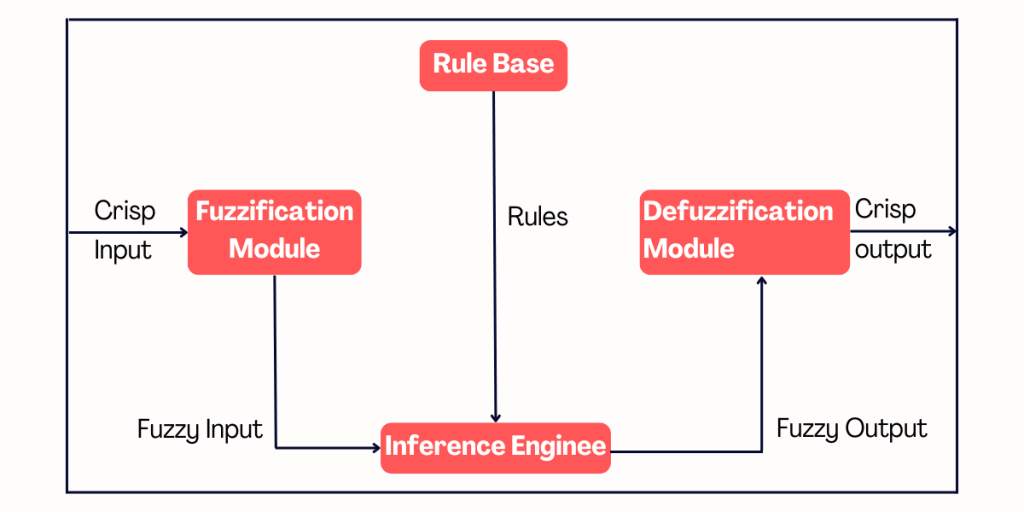
6. Natural language processing
Natural language processing or NLP is a branch of artificial intelligence, Computer Science, and Human language that helps to communicate between computers and humans through natural language.
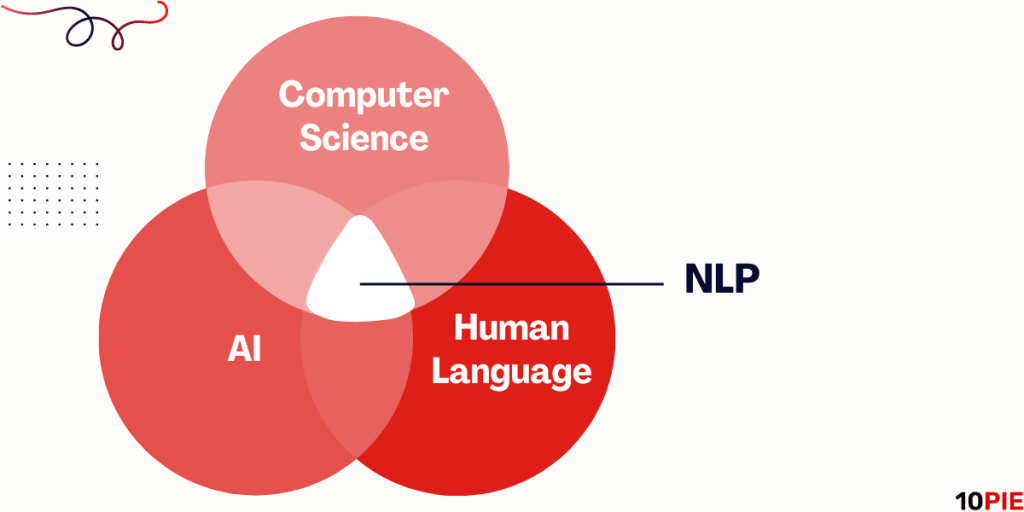
Natural language is the way we humans are expressing with each other through speech and text. Natural language processing is the process that helps computers understand, analyze, translate and manipulate human language.
Question Answering, Sentiment Analysis, Spam Detection, Machine Translation, Spelling correction, and Speech Recognition are common examples of NLP applications.
Natural language processing is further divided into two parts:
- Natural Language Understanding (NLU)
- Natural Language Generation (NLG)
7. Pattern recognition
It is the process of recognizing patterns using machine learning algorithms. This process can be defined as the classification of data based on previously acquired knowledge or statistical information derived from patterns and/or their representation. The data inputs in this process can be words or texts, images, or audio.
Speech recognition, multimedia document recognition (MDR), speaker identification, and automatic medical diagnosis are some common examples of Pattern recognition technology.
8. Statistical AI
Anyone working in the field of artificial intelligence is familiar with the ideas of probability and statistics as they play a significant role in the field.
Statistical Relational Artificial Intelligence (StarAI) is a combination of both Logical (or relational) and probabilistic (or statics) AI.
Relational AI excels at handling complicated domains with a large number of items connected by complex relationships, while the uncertainty that derives from incomplete and noisy descriptions of the fields is managed well by
statistical AI.
9. Data mining
Data mining is the process of extracting information out of massive data sets to find patterns, trends, and relevant data that would allow the business to make data-driven decisions.
Data mining is also known as Knowledge Discovery of Data (KDD). It mainly transforms unprocessed data into useful information.
Data mining can be done on the following types of databases:
- Relational Database
- Data warehouses
- Data Repositories
- Object-Relational Database
- Transactional Database
Career Opportunities in Artificial Intelligence branches
AI and ML are becoming mainstream and career opportunities have increased in this field in the past few years. There has been a shortage of employees with skills in this field.
According to Statista, 82% of organizations need machine learning skills and only 12% of enterprises state the supply of ML skills is at an adequate level.
So, What AI Career options are available and what Careers Can You Pursue?
Let us look at the top AI & ML career options individually.
1. Machine Learning Engineer
Machine Learning Engineer plays a vital role in the data science team. They do research, develop, and create the artificial intelligence that powers machine learning, as well as maintain and develop already-existing artificial intelligence systems.
An average Machine Learning Engineer can earn between 35,00$ – 50,000$ and $1,80,000 in tech giants like Google and Facebook.
2. Data Scientist
A data scientist’s job is to gather data, look at data, and shape data, but in many different ways and for many different reasons. An average data scientist spends 2 weeks analyzing a data set and delivering the results to a business audience.
A data scientist makes $105,000 on average. A manager of a data science role can earn up to $1,80,000 /yr with experience.
3. Big Data Engineer/Architect
Big Data architects construct data infrastructure to extract, organize and maintain
data for authorized individuals to access. Data architects/engineers work with database administrators and analysts to provide easy access to the company’s big data.
Big data engineers are among the best-paid job roles and Can earn up to $151,300 on average.
4. Data Analyst
The Data Analyst job includes reviewing data to identify key insights into a business’s customers and ways the data can be used to solve problems. A data analyst can earn up $65,000 or more.
5. Robotics Engineer
An average robotics engineer works on building robotic prototypes, configuring, examining, and debugging robots and robotic systems. They can earn an average salary of $151,300.
6. NLP Engineer
Natural Language Processing (NPA) Engineer’s daily task is to transform natural language data into useful elements using NLP techniques to feed classification algorithms. NPL engineers can earn up to $78,000, going up to over $100,000 with experience.
7. Business Intelligence Developer
The task of creating, managing, and maintaining business interfaces falls under the responsibility of a business intelligence developer. The average salary of a Business Intelligence Developer is $86,500, going up to $130,000 with experience.
📌 Related article: Best AI documentaries to watch this year
Final Words
In this guide, we have discussed different types of Artificial Intelligence. We also discussed various branches of AI which will give us more clarity on the flow of development.
AI and Ml is a vast field that still needs to be researched. Artificial intelligence has opened the gate to new opportunities in the field of science and engineering. Career opportunities across various industries are expanding with captivating, and high-paying jobs in the field of AI.

Article by
Samruddhi Chaporkar
Samruddhi is a Technical Content Writer of science and technology with an academic qualification in Bachelors in Computer Applications (BCA). Her love for writing and knowledge of computer science helps her write about trends in the technology industry that help people understand the ins and outs of the world of technology.


